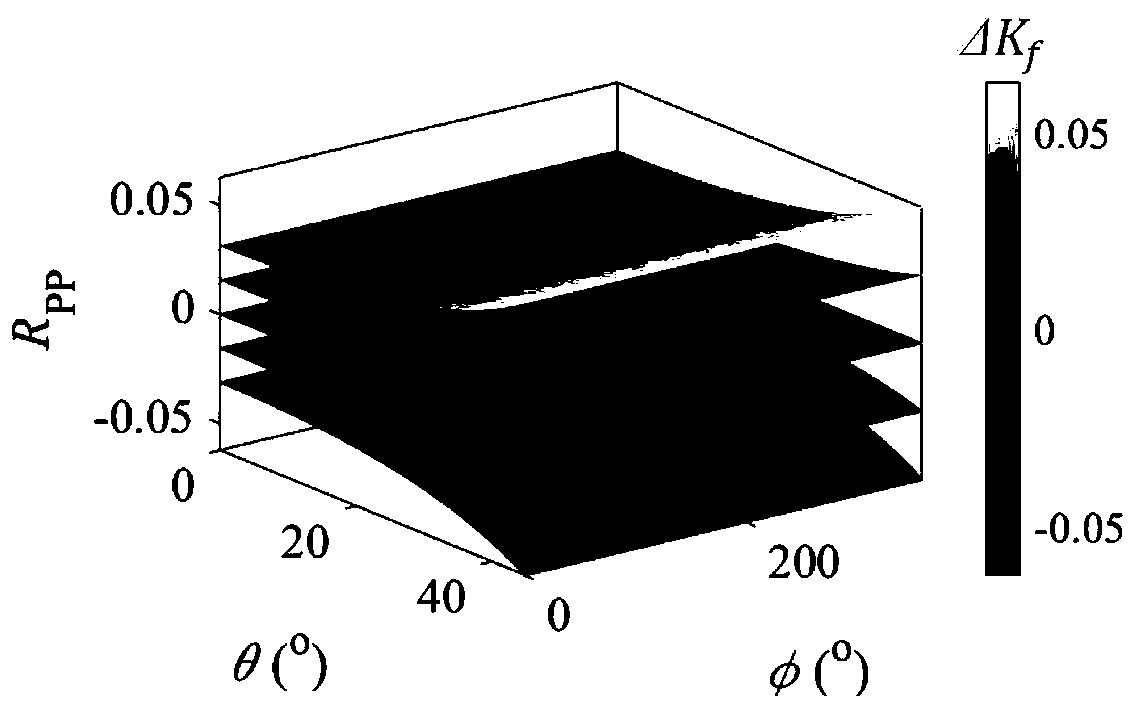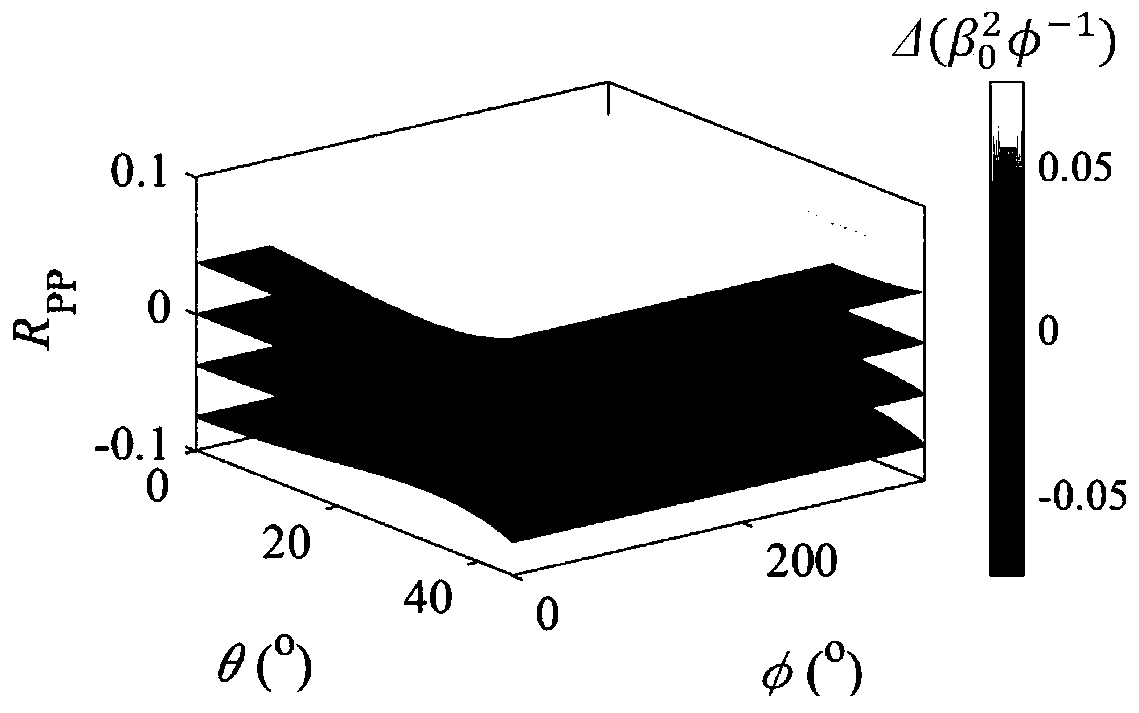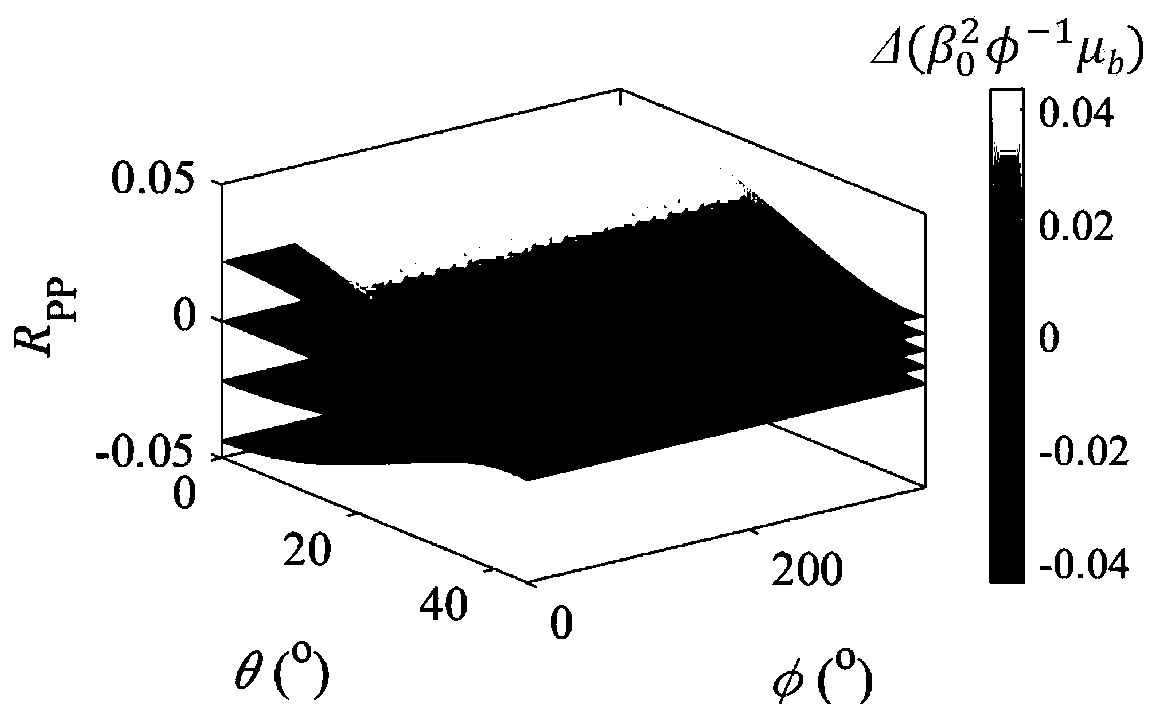Oil crack reservoir inversion method based on matrix-fluid-crack decoupling
A fractured reservoir and fluid technology, applied in the field of physical inversion, can solve problems such as incorrect fluid indicator factor estimation and influence
- Summary
- Abstract
- Description
- Claims
- Application Information
AI Technical Summary
Problems solved by technology
Method used
Image
Examples
Embodiment 1
[0095] see Figure 1a ~ Figure 1f , an inversion method for oily fractured reservoirs based on matrix-fluid-fracture decoupling, including the following steps: using the Born approximation theory and the first-order perturbation assumption, deduce the Based on the linearized PP wave reflection coefficient of matrix-fluid-fracture decoupling, the combined effects of rock background matrix, pore fluid and fracture strength on seismic reflection amplitude can be separated in the derived formula. Using geological data and logging data as prior information, azimuth pre-stack inversion is realized by stacking azimuth seismic data with partial incidence angles, and the rock background matrix elastic modulus, fluid bulk modulus and Fracture weakness, so as to realize fluid identification and fracture detection of fluid-saturated fractured reservoirs.
[0096] Based on the linear sliding model, the flexibility matrix S of fluid-saturated fractured rock sat can be expressed as the fl...
Embodiment 2
[0182]Referring to Figures 2-6, this example uses a well log model to demonstrate the proposed two-step inversion method to estimate the effective pore fluid bulk modulus, dry rock matrix, and saturated fracture weakness. Synthetic seismic angle gathers at different azimuths are generated using the convolutional model and estimated seismic wavelets.
[0183] Figure 2a It is a noise-free seismic gather synthesized at different azimuth angles, the azimuth angles are 30°, 60°, 90° and 120° respectively, and the incident angle varies from 0° to 40°. In order to illustrate the robustness of the proposed inversion method, this embodiment also adds Gaussian random noise with different SNRs (the SNRs are 5 and 2, respectively) to generate noisy azimuth gathers, as shown in Figure 2b and 2c.
[0184] Figure 3a and Figure 3b The real and inverted values of the model parameters are given, and the results show that the estimation of the model parameters is reasonable in the case...
Embodiment 3
[0188] Referring to Figures 7 to 10, this example uses the actual data in eastern my country and uses a two-step inversion method to estimate the effective pore fluid bulk modulus, dry rock matrix and saturated fracture weakness, and verifies the results of the present invention. effectiveness of the method described.
[0189] Figure 7a -7d is the stacked seismic profile of different azimuth angles, the azimuth angles are 0° (the range between -30°-30°), 45° (the range between 15°-75°), 90° (the range between 60° range between -120°), 135° (range between 105°-165°). For each azimuth data, the average angle of incidence for each common midpoint profile (CMP) gather is 12° (range between 4°-20°), 24° (range between 16°-32°) 36° (range between 28°-44°).
[0190] Then, the model-based LS inversion of the azimuthal elastic impedance, Figure 8a -8d shows the inverted EI profiles at different azimuth angles.
[0191] Finally, Bayesian inversion is performed on the model paramet...
PUM
 Login to View More
Login to View More Abstract
Description
Claims
Application Information
 Login to View More
Login to View More - R&D
- Intellectual Property
- Life Sciences
- Materials
- Tech Scout
- Unparalleled Data Quality
- Higher Quality Content
- 60% Fewer Hallucinations
Browse by: Latest US Patents, China's latest patents, Technical Efficacy Thesaurus, Application Domain, Technology Topic, Popular Technical Reports.
© 2025 PatSnap. All rights reserved.Legal|Privacy policy|Modern Slavery Act Transparency Statement|Sitemap|About US| Contact US: help@patsnap.com



